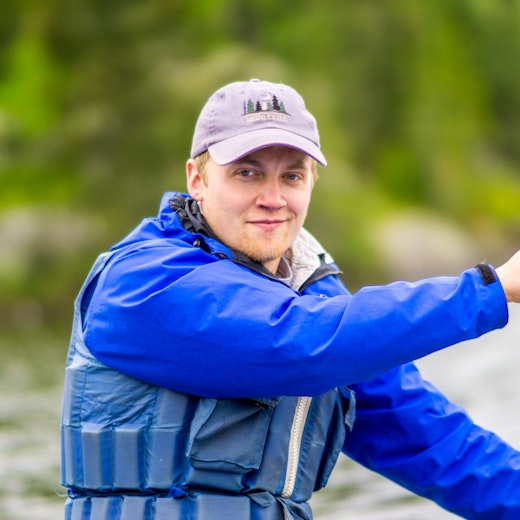
Summer camps come in all shapes and sizes. The following tips are for parents searching for a sleepaway camp where canoe camping is a primary focus of the camp’s program.
Determine where the kids will be canoeing.
The keyword here is wilderness. People who canoe camp are seeking solitude in nature. Wilderness typically has usage limits to control human traffic so one can go days without seeing another person. Of course, I can’t mention “canoeing” and “wilderness” together without a fitting quote from Minnesota’s own Sigurd Olson, who said, “There is magic in the feel of a paddle and the movement of a canoe, a magic compounded of distance, adventure, solitude, and peace. The way of a canoe is the way of the wilderness and of a freedom almost forgotten.”
Verify canoe trips at least 4 days in length.
It takes people a few days to shed their urban concerns and adjust to the rhythms and routines of the outdoors. When I’m leading trips, I’m still thinking about checking emails the first couple of days into a trip. I start to adjust and see kids “get into the groove” on day three. A four-day trip allows at least two full days in the wilderness, on account of the first and last day being shortened due to entry and exit.
Ensure trip leaders have the appropriate certifications.
“There’s a lotta water out there, boys.” John Erdmann’s famous oft-repeated quote underlines the importance of trip leaders’ certifications. Lifeguarding, Wilderness First Aid (WFA), and Wilderness First Responder (WFR) courses provide safety and injury management training.
Analyze the outdoor adventure progressions.
Take a look at the summer camp’s wilderness adventure or tripping page and see if the progression of canoe trips aligns with you and your child’s goals. Look at the top of the progression (i.e., the longest trip kids can take) to get a sense of what trips your child could end up on. Does your teen want to go fishing for 7 days or spend 36 days in the Canadian bush?
Compare the balance between in-camp and outdoor adventures.
Some camps have kids arrive, receive a brief orientation, go on a 10-day trip, and go home. Others offer more of an in-camp program of land and water sports and activities which get the kids in shape for progressive canoeing adventures during a four-week stay. Canoe camping may only be part of the overall program.



Establish your preferred demographics.
Check what age the camp allows and if it’s coed, all boys, or all girls. Do they enroll nonbinary or transgender campers? Can they manage a kid with allergies or special diets? How about physical disabilities or social, emotional, and behavioral disorders? See what type of professionals the camp employs. Smaller camps will probably have a registered nurse while bigger camps may have a social worker, psychologist, and doctor on staff.
Evaluate the adventure camp’s alumni involvement.
A thriving alumni group is a sign of a quality summer camp. Check the canoe camp’s alumni page to get a feel for former campers’ feelings towards the camp. If they experience was forgettable, there won’t be an alumni Facebook group, reunions, or newsletters. If you find that the camp’s alumni are donating to camp and are sharing photos on an alumni page, their experience at summer camp was worthwhile and likely still is today.
View Google and Facebook reviews.
Check ‘em to see that the reviews align with what the camp’s website is trying to sell you.
Dive deep into the photos, blogs, and videos.
Content creators choose the best photos for their websites. Look deeper into photo galleries and photos shared by parents, blogs, and YouTube videos to see the summer camp in its authentic form.
Get to know the people running camp by calling them.
You can only glean so much of someone’s personality over email or text. The personalities of the people running summer camps trickle down to the staff and kids. Get to know them to get to know the camp.
Overnight summer camps with a canoeing focus allow for wilderness adventures to remote locations where kids can unplug from their screens, explore nature, and gain confidence from the camaraderie of life in the forest.







